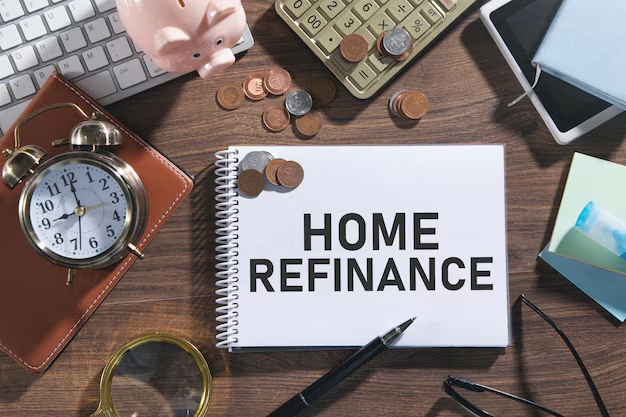Should You Pay Off a HELOC During the Draw Period? A Comprehensive Guide
Navigating the complexities of home equity lending can be daunting, especially when it comes to Home Equity Lines of Credit (HELOCs). If you're among the many homeowners considering what to do during the draw period of a HELOC, you're in the right place. Understanding whether to pay off a HELOC during its draw period can significantly impact your financial strategy. Let’s dive into the key considerations, benefits, and potential pitfalls.
Understanding the HELOC Draw Period
A HELOC, or Home Equity Line of Credit, is a flexible form of borrowing against the equity of your home. Unlike a lump-sum loan, a HELOC allows you to draw funds up to a certain limit during an initial draw period, which typically lasts around 5 to 10 years.
What Happens During the Draw Period?
- Interest-Only Payments: During this phase, most lenders require only interest payments on the amount borrowed. This offers a lower immediate cost but can be a double-edged sword.
- Revolving Credit: Similar to a credit card, you can borrow, repay, and re-borrow funds within your credit limit.
- Variable Interest Rates: The interest rate often varies, making budgeting a bit unpredictable.
Why Consider Paying Off a HELOC During the Draw Period?
While minimum payments during the draw period are often interest-only, paying towards the principal can offer significant benefits:
- Reduced Long-term Costs: Paying off principal reduces overall interest payments.
- Fixed Budgeting: Eliminates future financial uncertainties associated with rate fluctuations.
- Financial Stability: Frees up equity and enhances your home equity for future needs.
Benefits of Paying Off Your HELOC Early
Financial Flexibility
Having fewer monthly obligations means you can mobilize funds for other investments or expenses. Early payment during the draw period can relieve potential financial strain.
Interest Savings
Interest compounding is a silent wealth-drainer. By paying off your HELOC early, you significantly save on future interest payments, turning your equity into an asset rather than a liability.
Improved Credit Profile
Reducing outstanding debt is beneficial for your credit score. A strong credit score can help secure better rates on future loans or credit opportunities.
Potential Downsides to Early Payoff
Every financial decision carries potential drawbacks. Here’s what to be mindful of:
Prepayment Penalties
Some HELOC contracts may include penalties for paying off the balance early. Always read the terms and conditions of your line of credit to understand such stipulations.
Cash Flow Impact
Using available funds to pay off a HELOC rapidly might strain your liquidity or take away from other investment opportunities. It’s crucial to balance repayment with maintaining an emergency fund and diversifying your investments.
Opportunity Cost
Paying off a HELOC means allocating money that could yield better returns in the stock market or other investments. It’s important to weigh the certainty of paying off debt against potential investment gains.
Strategies for Paying Off a HELOC During the Draw Period
Want to get ahead on payments? Here are practical steps to consider:
Create a Payment Plan
Develop a realistic repayment schedule that fits your budget, aiming to cover both interest and some principal. Consistency is key.
Rounding Up Payments
Round up monthly payments to the nearest hundred or even thousand if feasible. Small increments can lead to significant reductions in principal over time.
Biweekly Payments
Switch to making biweekly payments instead of monthly ones. You'll make an extra payment annually, accelerating payoff without much extra effort.
Use Windfalls
Allocating bonuses, tax refunds, or other windfalls directly to your HELOC can make a huge dent in your debt without impacting your regular budget.
📌 Quick Tips for Managing Your HELOC
- 📅 Review Terms: Ensure you understand payment requirements and rates.
- 🏦 Routine Check-ins: Regularly assess your financial position to stay on course.
- 📈 Monitor Interest Rates: Stay informed about rate changes that could affect payments.
- 🔄 Stay Flexible: Be open to adjusting your plan as new financial realities emerge.
Alternatives to Paying Off a HELOC Early
If paying off your HELOC during the draw period doesn't fit your circumstances, consider these alternatives:
Refinance the Loan
Refinancing might offer lower interest rates or convert your HELOC into a traditional home equity loan with fixed payments.
Consolidate Debt
Consider consolidating your HELOC with other debts for a simplified payment structure, possibly at a lower rate.
Keep the Line Open
If you might need to tap into your HELOC in the future, consider keeping the line open. Maintaining access to credit can be a strategic safety net.
Making an Informed Decision
When pondering the question, "Can you pay off a HELOC during the draw period?" the answer isn't merely a simple yes or no. It's about evaluating your financial goals, comfort with risk, and long-term plans.
Ultimately, paying off your HELOC during the draw period offers a mix of benefits and considerations unique to your financial situation. With thoughtful planning, a holistic view of your credit landscape, and careful consideration of potential costs and savings, you can make the most strategic decision for your future.
By staying informed and proactive, you can navigate the ins and outs of your HELOC with confidence, ensuring your choices best serve your financial health and goals. Keep this guide as a reference to illuminate the path forward, empowering you in your journey toward financial freedom.

Related Topics
- Are Heloc Loans Good
- Are Heloc Rates Fixed
- Are Heloc Rates Going Down
- Are Helocs a Good Idea
- Are Helocs Tax Deductible
- Are Student Loans Considered As Debt When Getting a Heloc
- Are Student Loans Considered As Debts When Getting a Heloc
- Are Student Loans Considered When Getting a Heloc
- Are Student Loans Considered When Getting a Heloc In Illino
- Are Student Loans Considered When Getting a Heloc In Illinois